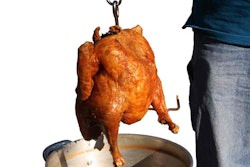
You drive your car or pickup every day, but do you ever stop to think about everything under the hood that contributes to making it run?
In addition to the engine, there are essential parts like the battery, the air filter, the timing belt and reservoirs for oil and various fluids. Each of these components is critical for the smooth, efficient operation of your vehicle.
When well-designed and well-maintained, these parts ensure it runs well for a long time. Pricing in your landscape contracting firm can be thought of as one of the mechanical components “under the hood” of your business that is necessary for it to run efficiently and profitably.
The more effectively and mindfully you design and implement pricing structures, and the more attention you give to optimizing the nuts-and-bolts parts of the pricing process, the more profitable and financially healthy your business will be. There are five high-impact pricing strategies you can begin to implement today to keep the motor humming for the long haul.
Sell to the right customer
In the early days of your business, when you were trying to build up your customer base and increase your business’s visibility in the marketplace, any sale likely seemed like a good sale. In fact, you may have agreed to work with any customer who showed interest in your firm.
On the surface, it seems logical that increased volume of sales leads to increased profits. But selling high volumes of goods and services, especially indiscriminately to a wide customer base, harms profitability more than it helps it. By pricing your offerings intelligently and confidently, you can communicate and promote the unique value of your services while still making a profit.
Incidentally, projecting the necessary confidence in this unique value and the price tag associated with it includes making the decision to discontinue relationships with customers who shop on price rather than value. It’s not always easy to part ways with customers, especially when they have been loyal to your business. If your customers are primarily price shoppers, and if they continually haggle for discounts and add-ons, they are not the customers for you.
Set appropriate margins
Margins are heavily dependent on your business’s ability to differentiate and specialize your offerings. Setting appropriate margins is critical for deriving value-based pricing that realizes optimal profits for your business. In general, offerings that risk becoming commoditized or are already viewed as commodities in the marketplace should receive lower margins, and goods and services that are highly specialized or that serve niche markets will receive higher margins.
Margin determination is also dependent upon the health of the marketplace. In a normal to healthy economy, you can confidently set high-range margins and expect a substantial return. During a recession or in a sluggish economy, be prepared to assign slightly lower margins for more commoditized offerings and to maintain or slightly raise them for more specialized or differentiated offerings.
It may seem like customers would not be willing to pay a premium for specialized goods and services in a recession, but perceived value is much more about what an offering means to the customer than it is about the actual monetary value of the offering as recorded in your business’s books.
Embrace the value meal
The “value meal” model, in which goods and services are bundled and offered as a package versus as individual a la carte items, is becoming increasingly popular in small businesses, and for good reason. Bundling allows businesses to sell higher volumes of specific goods and services when they are packaged and offered with complementary goods and services.
As a result, businesses find that offerings they previously struggled to market and sell suddenly sell at higher volumes. This is in large part because customers perceive they are getting a better value by purchasing a grouping of offerings at lower prices than they would each be sold individually.
Offerings that risk becoming commodities can especially benefit from bundling concept. When you run into the occasional customer who desires a bundled package at a reduced price, be prepared to grant modified or “stripped down” offerings, clearly communicating to the customer that this will result in a reduction of products or services. Often, this knowledge is enough for your value-minded customers to opt for the full offering.
Price incrementally
Luxury businesses like movie theaters often employ a strategy called incremental pricing. This pricing strategy involves gradually increasing the price of goods and services as their size or scope increases.
Incremental pricing benefits niche, luxury and specialty markets because it allows businesses in these markets to price on value for base offerings while continually building on that value and providing options to the customer.
When customers perceive they have choices, they are more likely to feel they are priorities to businesses, versus the “take it or leave it” mentality that can be communicated, even if inadvertently, by businesses that offer specialized goods and services. Incremental pricing works well to drive profits in service industries because it allows businesses to build upon unique and perceived value with minimal impact to budgets, resources, costs and the bottom line.
Standardize
Performing tasks and processes and using tools in streamlined ways helps businesses to run more efficiently and cost-effectively. In service-based industries, standardization enhances the collaboration between teams and departments, ensures guidelines are in place for safety and accountability and creates an environment in which seamless growth and repeatability of tasks and initiatives are optimized.
Another added benefit of standardization is that it reduces non-billable time, defined as any task that does not directly generate revenue for the business. Standardization allows your business to focus on providing quality services to your customers, because solid systems are in place for every area of operations.
One critical component of standardization is consensus. No matter the standards your business sets for the pricing and delivery of goods and services in your business, they must be agreed upon by all individuals in your business who are directly involved with revenue generation and customer satisfaction.
In their book Pricing with Confidence, authors Reed Holden and Mark Burton write, “You can’t have confidence in your pricing until you have confidence in the financial value that your offerings create for customers.”
In other words, your customers can’t be expected to understand the value of your business’s offerings if you and your teams struggle to understand and identify that value and price your goods and services accordingly. Understanding, identifying and communicating the unique value of your business’s product and service offerings are the critical first steps in creating pricing structures that result in untold profits.
EDITOR’S NOTE: This article was written by Mike Eisenhuth, a Success Coach with LandOpt, a business that works with independently-owned landscape contractors across the U.S., helping them increase profitability, cash flow and revenue. To learn more, visit: www.landopt.com.









